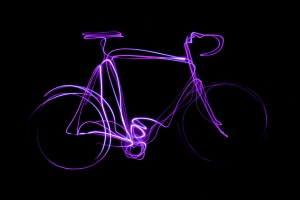Let’s hope I manage to explain this properly :)

Firstly, a shoutout to a local - a University of Otago researcher was actually involved in this. Hooray! It means I get, not only to geek out, but to have pride in doing so. Always a nice feeling.
So, on with the post. Well, in essence, quantum memory just got a lot better. If that’s all the news you needed, you may stop reading now.
If, on the other hand, you have a multitude of questions, perhaps including ‘what is quantum memory?, ‘how much better?’, the classic ”why do we care?’ and so forth, then read on.
The first thing to understand is, probably, the concept of quantum*. In this case, we’re talking about really, really small things. On the subatomic level. Smaller than atoms. Electrons. Photons. Quarks (beware the quantum duck, haha), etc.
The next thing to understand is the idea of quantum communication networks. We’re interested in these because, if we can implement them, they’re very secure. Very secure. The problem with current encryption is that no encryption algorithm as currently written is perfectly unbreakable. The top encryptions (well, many) use random numbers in the encryption process. The problem with this is that a piece of software had to generate those random numbers, meaning that they aren’t, truly, random.
The great thing about quantum communication networks is that true random number generation** is possible. Hence the security.
The thing with building quantum communication networks, though, is that there needs to be the ability to store this information. So that it can be coordinated, passed on, etc. And retrieval of the information, once stored, needs to be on-demand. One needs to be able to lift specific data out of the whole packet, for example. Or get it when one needs it.
The wrinkle here is that the medium used is photons. Little light bits. So the storage device/medium needs to be able to store the quantum information in a light field. Easy! Or not, in fact. The thing with photons is that they’re quantum. Which means that Heisenberg’s uncertainty principle applies to them.
Heisenberg’s uncertainty principle is brilliant. In essence, it states that on a quantum level, one can either know something’s position, or its velocity. One can’t know both (one can in the macro world we inhabit, happily). Why is this? Because in order to see something, we have to bounce photons off it. If you’re dealing with subatomic stuff, then even one photon is kinda big. As an example, observing quantum-thing-A by bouncing just a single photon off of it. changes its velocity in the same way that someone your size bumping into you while you’re walking does. So you can see where it was at the time of the incident, but you can’t know where it was going. Or at what speed.
What does this mean? Well,it means that the classic means of measuring and reconstructing this data don’t work. The storage device has to simply imprint the light field’s characteristics - we can’t measure them when they’re input, because that changes the information. Rendering the exercise moot.
People have been playing with ways to achieve this storage for a while now. I myself have read some great papers on the subject. The problem is that, much like my memory sometimes, the highest recall allowed by any of these methods was low: 17% at maximum. That’s not even nearly enough to make it practicable, particularly if one is pedantic enough to want practical transmission rates at the sorts of distances (>1,000km) over which quantum communication would occur. The minimum efficiency necessary, for various reasons, is 50%.
These previous, low-efficiency means have used atomic vapours. They’ve also only been able to use pretty weak quantum states, and an average photon number of around one. Not great.
Now, however, a breakthrough has been achieved! A team of international physics brains have done things rather differently. Firstly, the quantum memory they’ve developed is solid state***. Which is brilliant. As Jevon J Longdell (the Kiwi author) says:
We stored the light and then recalled from impurties in a crystal. When people are developing new technologies, ones that are based on solid systems tend to be easy to make, reliable and robust and easy to minaturise. So the fact that we use a solid rather than atoms trapped in a vacuum chamber, is something of a selling point.
Secondly, they’ve gotten the recall efficiency higher. A lot higher. Up to, apparently, about 69 %. And they reckon they could get it even higher too, given improved materials.
Thirdly, it works for the weak quantum states of one photon the other, ‘classical’ memory used, up to bright states containing 500 photons. And for states of, on average, 30 photons or less, it was able to surpass the ‘no-cloning’ limit: this basically means that more information was retrieved from the input than was left behind or destroyed, which is good for maintaining the security of the communique.
In short - we’re one step closer, peeps, to truly secure communications. The excitement of intelligence (and commercial) communities around the globe is palpable.
For those who give not a jot about secure communications, it could also have other applications, such as the optical detection of ultrasound - useful both in health and in engineering (although for different things, obviously).
For anyone who’d like to wallow in all the details, the reference for the paper is below.
UPDATE: Jevon’s comment can be seen above. More may be forthcoming…
—————————-
* On which books have been written. This may merit a more fulsome post in the future. ‘Cause I really, really love quantum stuff.
** Oh dear. Another post topic…
*** No, it’s not a flash drive. It’s actually a sort of crystal.
Also:
Heisenberg’s Uncertainty Principle
Reference:
Hedges, M., Longdell, J., Li, Y., & Sellars, M. (2010). Efficient quantum memory for light Nature, 465 (7301), 1052-1056 DOI: 10.1038/nature09081